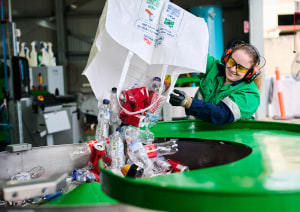Packaging bodies AIP and WPO have launched an awards program recognising packaging design that could reduce food waste.
The Save Food Packaging Awards recognises that food wastage is a serious packaging issue, with recent studies finding that 50 per cent of edible foods produced are not consumed.
The AIP and WPO recognise that designing packaging to minimise food waste needs to move to the top of the agenda for food processors, manufacturers and their packaging designers.
This new award seeks to encourage brand owners and designers to showcase the advances made through adopting new technologies and design innovation to prevent food loss in the supply chain.
"Packaging technologists and designers play a significant role in the early stages of sustainable packaging design," Keith Chessell, sustainable packaging design consultant and fellow of the Australian Institute of Packaging (AIP), says.
"This role requires a skilled balance of the need to protect the product, reduce packaging and cost, improve efficiencies in the production and the distribution process and simplifying supermarket and consumer handling and accessibility.
"In addition to combining all those factors, the final package must be innovative and be the silent salesman for the product."
"Now there is a new challenge: exploring packaging's role in reducing food waste."
The WPO recently explained how packaging can help reduce food waste.
It said that one third of all food is either wasted or lost – an amount that would be enough to meet global food needs.
A growing world population needs sufficient food, and over 840 million people are starving.
To feed them adequately, food production under the existing conditions needs to increase significantly.
This would require more arable land, more water consumption, more animal feed, and more fertilisers which would have significant adverse effects on the environment.
Curbing and minimising food loss and waste can considerably limit the scope of additional resource requirements because a quarter of the food that is currently lost and wasted would already be sufficient to feed the starving world population.
About 1.3 billion tonnes of food is actually thrown away each year, either because it spoils due to incorrect storage or inappropriate transport methods, or because it no longer meets the standards of the trade and consumers.
Furthermore, much food is not eaten by consumers because, for example, the quantities purchased by them are too large.
Studies have shown that in less developed countries, food tends to be lost at the pre-harvest, harvest, and initial handling phase.
With increasing development, food waste tends to move up the distribution chain to retail and consumption level.
Here food is more likely thrown away when still edible.
Using existing capacities is in every respect a more expedient alternative, according to the WPO.
This benefits the environment too: the carbon footprint of food lost worldwide each year is the equivalent of about 3.3 gigatons of CO2.
Compared with the emissions of individual countries, only the carbon footprint caused each year by the USA respectively China is higher.
FAO (Food and Agriculture Organization of the United Nations) presented two fundamental studies on the scale and reasons for food loss in different regions of the world in 2011.
These studies highlighted the role of packaging in preventing such loss in order to gain further understanding on how to secure a global resource-conserving food supply.
An essential element is the use of expertise from the packaging and food processing industry.
Efficient logistics are the key to minimising food loss effectively on route to trade and consumers. This includes state-of-the-art processing methods as well as intelligent packaging systems which ensure comprehensive protection.
Find out more about the Save Food Packaging Awards here.






